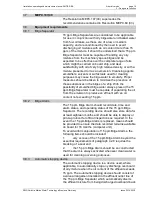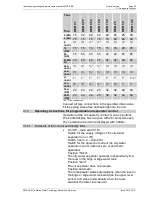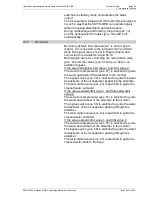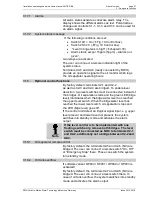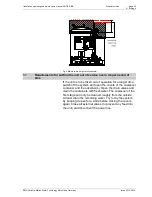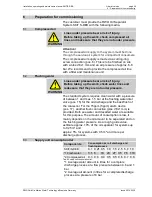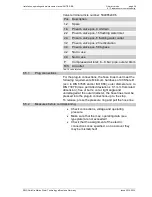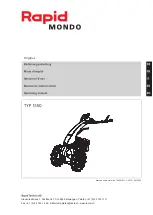
Installation, operating and maintenance manual SKIT/S-DEB
3rd print version
page 26
3 – Design and function
RWO GmbH
●
Marine Water Technology
●
Bremen
●
Germany
Issue 2014-04-10
switches to standby mode and activates the alarm
output.
The oil separation interval and the flush cycle are aligned
in such a way that the SKIT S-DEB can operate largely
without requiring attendance and maintenance.
During oil discharge and flushing, the pump (pos. 14)
and the optional electric heater (pos. 10) switch off
automatically!
3.17
Oil monitor
By factory default, limit value value 1 is set to 14ppm
(4ppm). It is connected to the terminals X4-7 and X4-8,
while limit signal value 2 is set to 15ppm (5ppm) and
connected to terminals X4-9 and X4-10.
Both signals serve for controlling the recirculation valve
(pos. 23) and the valves (pos. 57 and pos. 58) for an
adsorber bypass.
If the value falls below limit value 1 and limit value 2:
The valve for sample water (pos. 57) is switched to guide
the water upstream of the adsorber to the monitor.
The bypass valve (pos. 58) is switched to guide the water
downstream of the oil separator bypassing the adsorber.
The recirculation valve (pos. 23) is switched to guide the
cleaned water outboard.
If the value exceeds limit value 1 and falls below limit
value 2:
The valve for sample water (pos. 57) is switched to guide
the water downstream of the adsorber to the monitor.
The bypass valve (pos. 58) is switched to guide the water
downstream of the oil separator passing through the
adsorber.
The recirculation valve (pos. 23) is switched to guide the
cleaned water outboard.
If the value exceeds limit value 1 and limit value 2:
The valve for sample water (pos. 57) is switched to guide
the water downstream of the adsorber to the monitor.
The bypass valve (pos. 58) is switched to guide the water
downstream of the oil separator passing through the
adsorber.
The recirculation valve (pos. 23) is switched to guide the
cleaned water back to the bilge.








